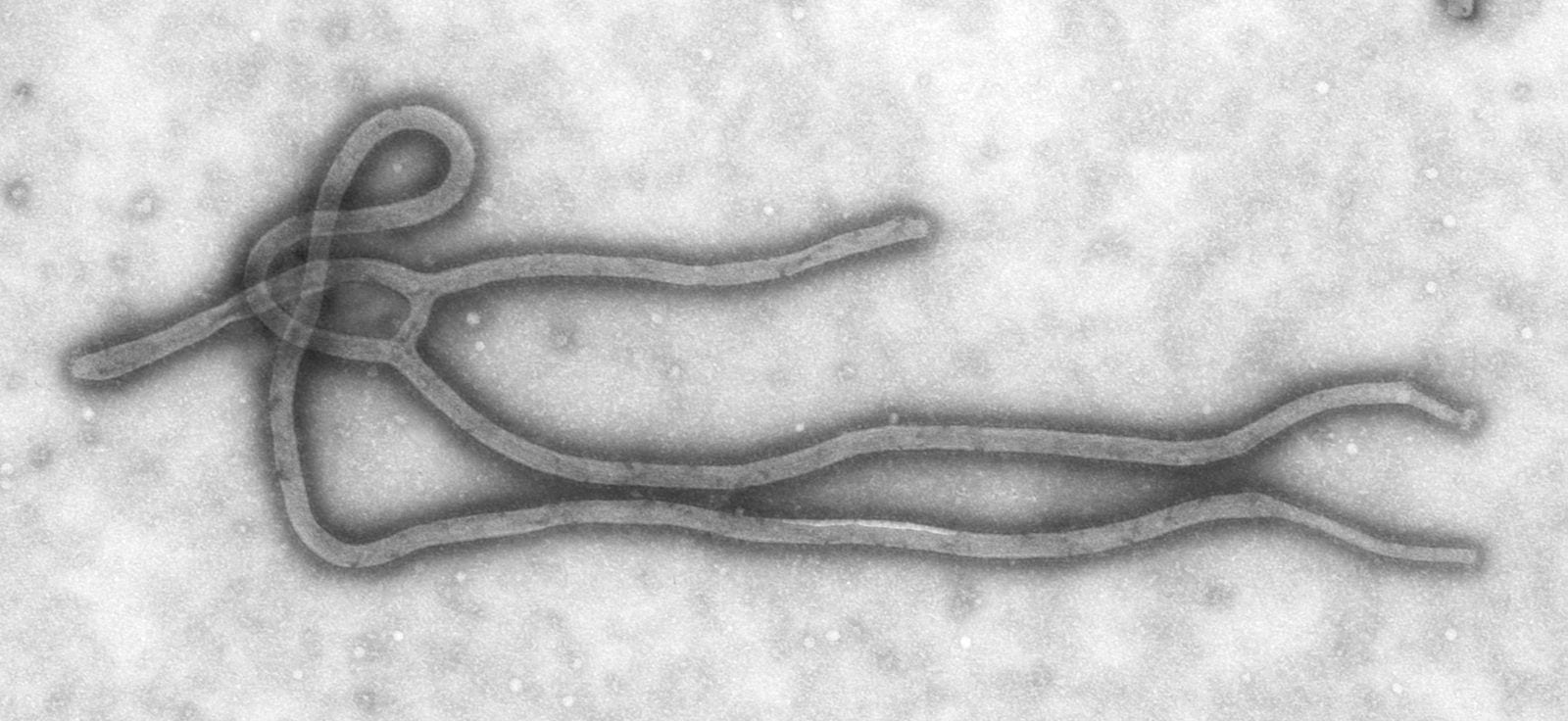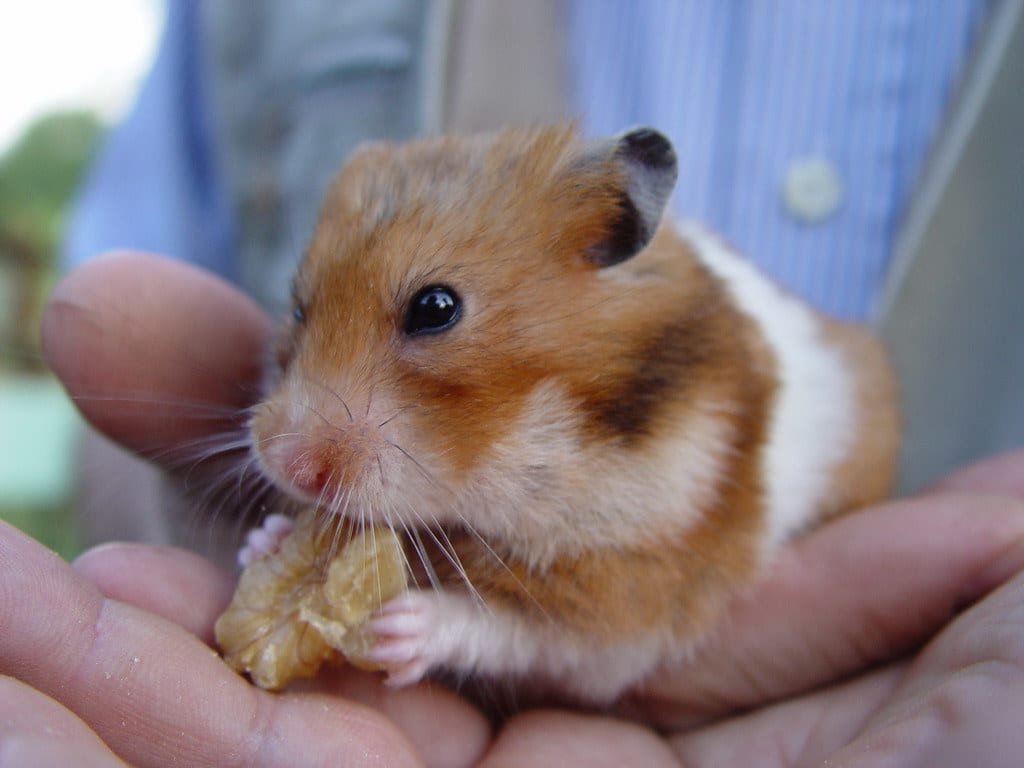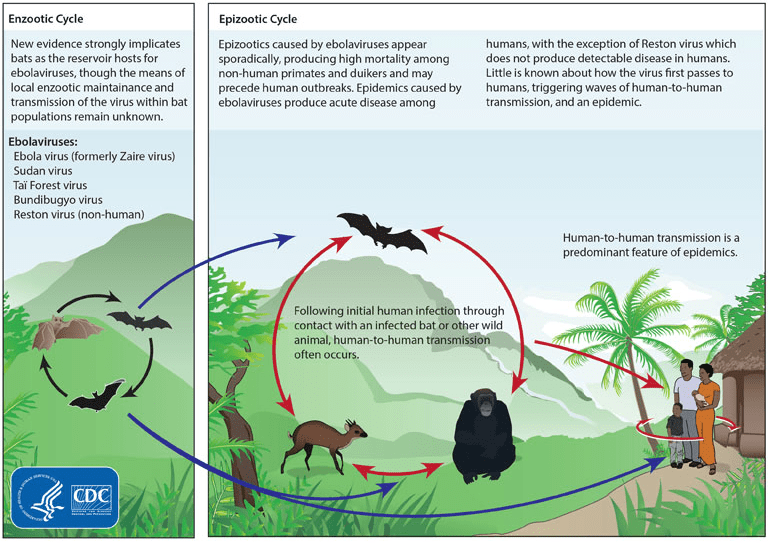Ebolavirus is one of the most infamous disease causing pathogens of the modern era. The 2014 Ebola outbreak in West Africa was the largest outbreak of ebolavirus to date, with over 28,000 suspected cases and 11,000 deaths. Ebolavirus is just one member of the Filoviridae virus family. These viruses are colloquially referred to as Filoviruses and are named after the filamentous noodle structure the virus particles have. There are only a few different species of Filovirus that have been discovered and we know very little about the evolution of Filoviruses as a whole. Recent outbreaks of Ebola have caught the attention of the entire world, but what most people don't know is that these viruses have been around for a very long time, millions of years in fact!

Source: Wikimedia Commons Photo Credit: Cynthia Goldsmith Centers for Disease Control and Prevention Licensed under Public Domain
I used to work in a Paleovirology lab that studied ancient relatives of ebolavirus. Broadly speaking, Paleovirology is the study of ancient viruses. Much like how a Paleontologist digs up fossils from long dead organisms to study their evolution, Paleovirologists are digging up virus fossils. However, these fossils aren't found buried deep underground, they are actually found within the genomes of organisms that were infected by these viruses in the past. Sometimes, during a viral infection, the genetic material of the virus can be copied into the germline of the host. That viral gene insertion can then be passed down through many generations over millions of years. The National Center for Biotechnology Information (NCBI) has amassed an incredible large public database of DNA sequences. Paleovirologists can dig through this information to look for viral insertions in different animal genomes. So instead of using a shovel to dig up fossils, Paleovirologists use a computer!
Well, it turns out that Filoviruses fossils can be found inside of many different organisms like bats, rodents,and marsupials. In fact, the Filovirus fossils most closely related to ebolavirus are found in the DNA of Cricetid rodents, a group of rodents that include moles, voles, and hamsters. Yes, that's right, hamsters, like the ones you can get at the pet store, have fossilized Ebola DNA in them. The discovery of Filovirus fossils in koalas and kangaroos is also strange because they are native to Australia and are not found elsewhere. This means that Filoviruses, at one point, spread themselves around the world. Recently, scientists even discovered Filoviruses that live in fish. So Filoviruses aren't just on land, they're in the oceans too.

This is all really interesting because Filoviruses are zoonotic viruses and have the potential to jump to humans. The very first case of a human being infected by a Filovirus was in 1967 when scientists came into contact with infected blood and tissue of green monkeys. We don't yet know which animals are the reservoirs for Ebola in Africa. Many researchers suspect that Bats are responsible for harboring the virus, but any of the animals with Filovirus fossils in the could be potential carriers. Don't freak out though, you can't get Ebola from your hamster. It's impossible. They don't have live viruses in them, just a couple of fossilized genes.

The final piece of this paleovirology puzzle is that researchers suspect that these Filovirus fossils might help the host become immune to a viral infection. Common laboratory rats have these fossils in them and they don't get sick when infected with Ebola. We don't know for sure if the fossils are responsible for inducing immunity, but studies with other viruses show that this hypothesis isn't so far fetched. Regardless, while humans have yet to figure out how to fight off ebolavirus, rodents have mastered it. Maybe if we can figure out how they do that, we can use that knowledge to help develop effective treatments in humans.
If you're interested in learning more, check out our previous posts about Ebola and other zoonotic diseases here and here!
About the Author
Max Barnhart is a PhD studying the evolution of heat stress resistance in sunflowers at the University of Georgia. He is also the current Co-Editor-in-Chief of the Athens Science Observer. Growing up in Buffalo, NY he is a diehard fan of the Bills and Sabres and is also an avid practitioner of martial arts, holding a 2nd degree black belt in Taekwondo. You can contact Max at maxbarnhart@uga.edu or @MaxHBarnhart.
- Max Barnharthttps://athensscienceobserver.com/author/max-barnhart/October 21, 2021
- Max Barnharthttps://athensscienceobserver.com/author/max-barnhart/November 11, 2020
- Max Barnharthttps://athensscienceobserver.com/author/max-barnhart/October 15, 2019
- Max Barnharthttps://athensscienceobserver.com/author/max-barnhart/September 22, 2019








